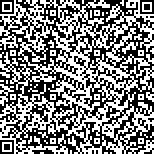| 摘要: |
| 1997年4月在山东海阳市近海捕获10尾中国对虾,采用患暴发性流行病的虾池中的病虾为毒种,进行人工感染试验。采用两次聚合酶链反应(PCR)检测方法,对感染亲虾的胃、腮、卵巢,以及卵和各期幼体进行跟踪检测。对经人工感染的10尾亲虾组织的PCR检测结果表明,6尾虾的胃样呈阳性,其中4尾为第1次检测出阳性;1尾虾的腮样呈阳性;2尾虾的卵巢样呈阳性,且其所产的卵子也呈阳性;每尾亲虾产卵所孵化出来的各期幼体,经两次PCR检测均呈阴性。随着实验水温的上升,人工感染病毒的亲虾存活的时间缩短;卵子的孵化率随着对亲虾感染时间的增长而有大幅度降低的趋势。 |
| 关键词: 病毒 人工感染 亲虾 子代 PCR检测 |
| DOI: |
| 分类号: |
| 基金项目:国家攀登计划B资助项目,PD B-6-6-1号 |
|
| PCR DETECTION OF ARTIFICIAL INFECTION OF BROOD SHRIMP PENAEUS CHINENSIS WITH THE PATHOGEN OF THE EPIDEMIC DISEASE AND THE EFFECT ON THE LARVA |
|
LIU Ping, KONG Jie, SHI Tuo, LIU Zhi-hong, LI Jian, HAN Ling-ling
|
|
Yellow Sea Fisheries Research Institute, Chinese Academ of Fishery Sciences, Qingdao, 266071
|
| Abstract: |
| Artificial infection of 10 brood shrimps of Penaeus chinensis which were caught from inshore of Haiyang City, Shandong Province in April, 1997, was carried out by feeding with specimen affected by the virus of the epidemic disease. The shrimps were placed in 100L glass fiber reinforced plastic tanks individually, one of which was used as the control. After reared one day at 16°C, the shrimps were fed with specimen affected by the virus twice a day. After the brood shrimps spawned, the stomachs, gills, ovaries and eggs were taken out for the extraction of DNA. The eggs were hatched, and the nauplius, zoea, mysis and post-larva were sampled (above 30 each) periodically for the extraction of DNA. The Polymerase Chain Reaction (PCR) technique was employed to detect the existence of the virus in the stomachs, gills, ovaries, eggs and post-larva. Among the 10 affected brood shrimps, positive results were obtained in 6 stomachs, 4 of them were positive in the first PCR test. Gills of the shrimp are positive. Ovaries of two shrimps and their eggs were also positive. All stages of the larva and the postlarva showed negative results. This virus can infect the ovaries which further infect the oocytes, but not larva. The virus could not spread from eggs to larva directly. As the experiment water temperature was 16–17.5°C, after the blood shrimp was infected for 3–5 days, the hatchery rate did not change, but for 7–8 days, the oocytes and eggs were all shown to be positive by PCR technique, and the hatchery rate decreased seriously; as the water temperature was over 19°C, only the stomachs was detected positive by the PCR technique. Thus, in response to water temperature rising, decrease in the death rate and hatchery rate here was not affected by the virus, but by the high temperature itself. With the water temperature rising, the survival time of the affected brood shrimps shortens. The hatching rate of nauplius decreased greatly with a prolonged brood shrimp affection time. |
| Key words: Virus, Artificial infection, Brood prawn, Postlarva, PCR detection |
